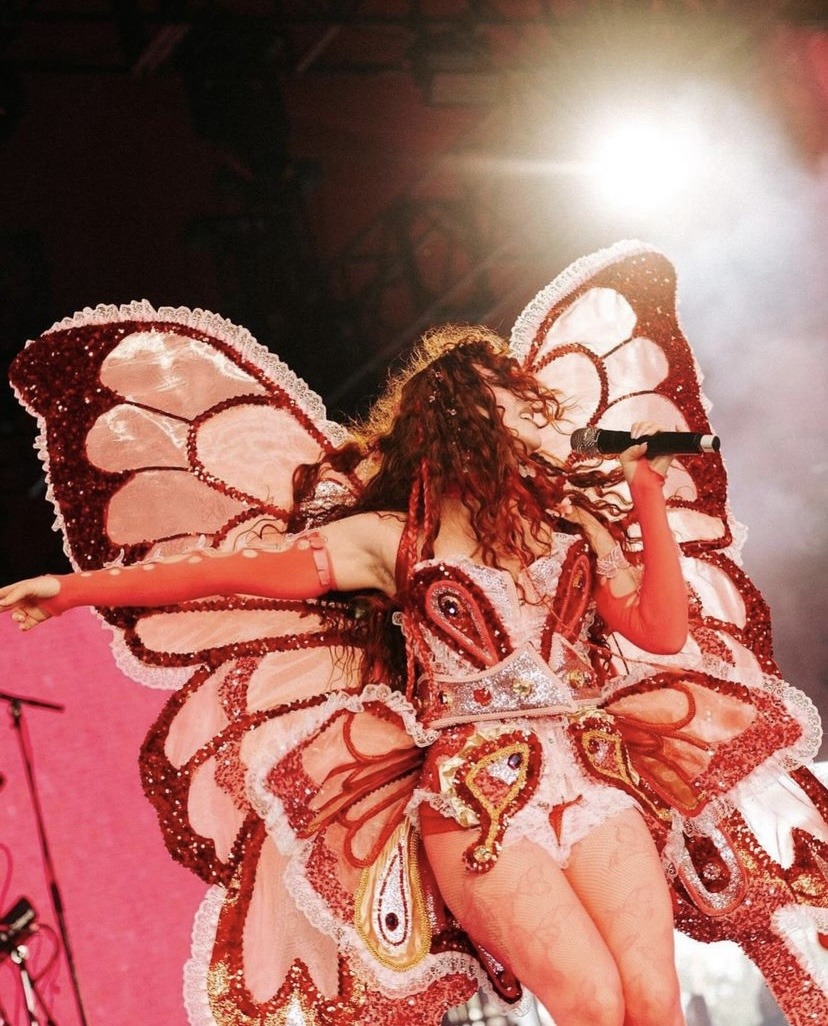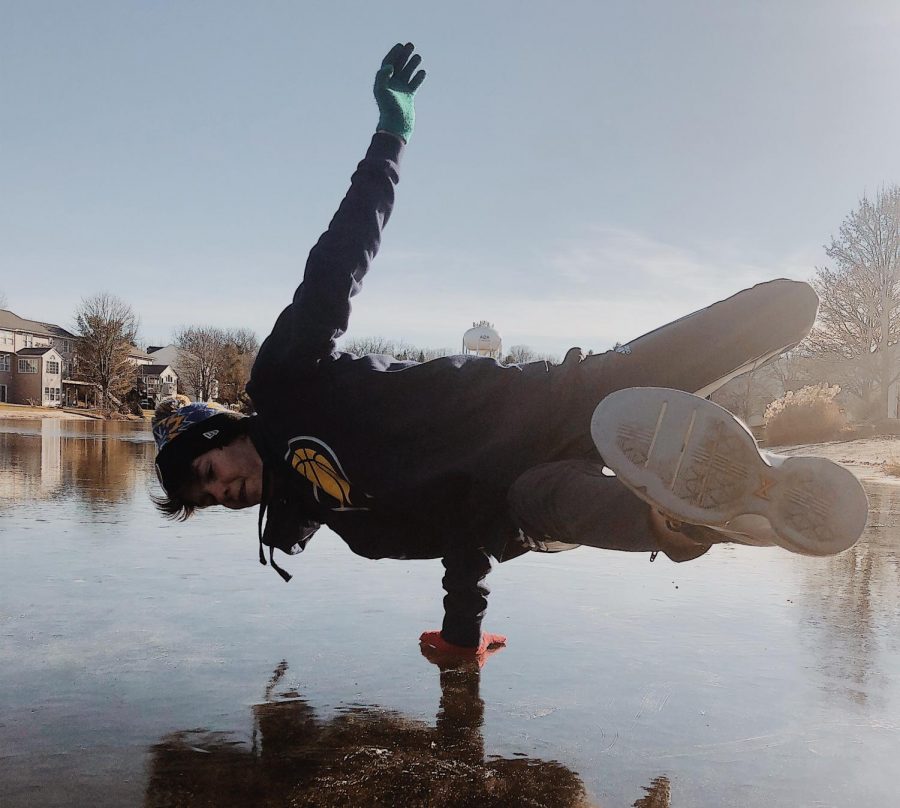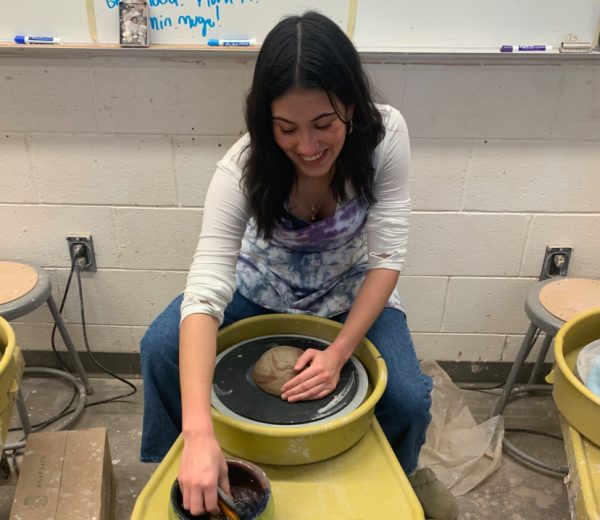Sam Musgraves has succeeded as both a performer and as a breakdancer
Wringing his hands with nerves, sophomore Sam Musgraves walks to the center stage of the Fine Arts Center at FHC’s Random Acts of Talent (RAT). While his nearly overwhelming stage fright might’ve held him back a year ago, now, he confidently starts his breakdancing routine, attacking the moves he had meticulously choreographed in rehearsals. Timed to perfection, Sam’s performance went off without a hitch, until his very last song.
The timing in his performance was only slightly different from how it had been during rehearsals, but the slight difference was noticeable to Sam. While many might’ve frozen in that moment of realization, breakdancing has taught Sam to improvise and think on his feet, which became key for him in ending his performance perfectly.
“During the last song change, “Humble,” I did a roundoff backflip,” Sam said, “but I had planned to round off back handspring backflip so it would be all in a chain. But, during my performance, I realized that I had been too busy setting up for it, and I noticed that in the song, the bass drop wouldn’t [time up with my moves if I did what I had rehearsed], so I just improvised from there.”
His improvisation was a life-saver for his act, wrapping up both his personal performance and the whole talent show, as he was the closing act.
More than most would realize, Sam had been stepping out on a limb for the show, as it required his routine to be a lot longer than his usual battles and competitions which would strongly test his stamina and abilities, especially during the show itself.
“In a battle, it’s one-on-one,” Sam said. “Usually, they are thirty-second rounds because breakdancing is super tiring, doing all of those spins and such. When I was doing RAT, I could not breathe. After I did my M-pose, I just kind of sat on the ground to catch my breath because I had been dancing for a minute and forty seconds or so.”
Out of the four years that he’s been breakdancing, RAT was the pinnacle of his career, both challenging and encouraging him. His breakdancing career, although relatively new, was actually over ten years in the making, starting back when Sam competed in gymnastics.
“My mom signed me up for gymnastics when I was about four or five years old,” Sam said. “It was all for fun [at first], but then I started getting a lot more into it at the age of nine or ten. I learned how to do a back handspring, and then I just stopped taking classes and began to learn [moves] on my own in my backyard. I was looking up YouTube videos and just trying to do everything I saw.”
Because it’s hard to find breakdancers who can flip and do all that stuff, I stood out and really progressed more as a dancer.
— Sam Musgraves
His enthusiasm drove his success in the hip hop subdivision, and his experience and training differed greatly from most other dancers.
“It made me stand out as a dancer, especially as a new one because new dancers can often be looked down upon,” Sam said. “Because it’s hard to find breakdancers who can flip and do all that stuff, I stood out and really progressed more as a dancer.”
His unconventional upbringing in terms of breakdancing eventually became his greatest aid for his routines. His preexisting gymnastics knowledge combined with new tricks and constantly bettering his improv skills ultimately led to his success in his one minute and forty-second time slot at RAT.
While it was the culmination of years of practice, RAT was not his first show, as he’s battled in several competitions through the place where he breakdances and practices, 616 Technique.
“I’ve performed a lot,” Sam said. “Our studio, 616 Technique, hosts battles and competitions downtown, so I go to those every once in a while to showcase my moves. You get taught moves, and then you can kind of make your own routine, but most of the time, it’s all improv or on the spot.”
While hip-hop and breakdancing may seem like all fun and games, Sam’s experience has proven that there are some difficulties that breakdancers face in performing.
“I’ve walked away with lots of bruises on my shoulders and all that,” Sam said. “[To protect my body from permanent damage, I focus on] proper technique and wearing proper layers when I train. You lessen the chance of getting hurt and getting bruises when you’re doing the moves if you [do that].”
No matter the number of bruises he collects from breakdancing, though, it all has worked in his favor, especially as a confidence booster and stress-reliever.
“I haven’t really thought of taking breakdancing too seriously,” Sam said. “Usually, I just practice when I’m stressed. It’s been really good for me to help me cope with [all that I’m going through].”
Ever since the sixth grade, dancing and doing tricks have been his favorite activities, taking him farther into his dancing career than he could’ve ever anticipated. As of recent, he’s taken more to a dance style called tricking, something that involves more kicking and gymnastics than breakdancing. Through tricking, he’s found a new community of people to train with, all while further honing his skills as a dancer.
However, regardless of the other facets of dance he tries out, Sam will never forget the freeing feeling of breakdancing and sliding, twisting, and turning for tricks, reminding him of all his hard work.
“The feeling I get when I learn something new that I have worked so hard on for a long time gives me this great, overwhelming feeling of accomplishment,” Sam said.

Susannah is a senior who is going into her third year writing for The Central Trend. Despite this being her last year in high school and on staff, she...


























































































